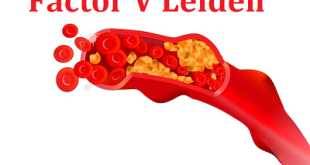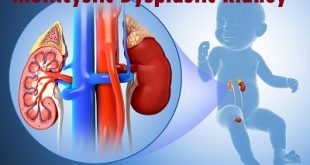Definition
Myelofibrosis is a disorder that affects bone marrow, which produces blood cells. This disorder will result in the growth of scar tissue in bone marrow and blood cells cannot develop properly. MF patients have low blood cell, white blood and platelet counts lead to anemia, neutropenia and thrombocytopenia, fatigue, weakness and an enlarged spleen.
Bone marrow anatomy from where the blood cells produced
Bone marrow and blood cells:
Bone marrow is the soft inner part of the bone that produces blood cells. All blood cells arise from the same type of cell called stem cells. These stem cells produce immature blood cells.
This immature blood cells develop into various blood cells and released into the blood as
- Red blood cells to carry oxygen
- White blood cells for defense against foreign bodies in the body
- Platelets to help the blood clot
Blood stem cells give different blood cells
History
Myelofibrosis was first portrayed in 1879 by Gustav Heuck.
More established terms incorporate “myelofibrosis with myeloid metaplasia” and “agnogenic myeloid metaplasia”. The World Health Organization used the name “chronic idiopathic myelofibrosis”, while the International Working Group on Myelofibrosis Research and Treatment call the sickness “essential myelofibrosis”. In 2008 WHO has received the name of “essential myelofibrosis.” Eponyms for the malady are Heuck-Assmann sickness or Assmann’s Disease, for Herbert Assmann, who distributed a depiction under the expression “osteosclerosis” in 1907.
It was portrayed as a myeloproliferative condition in 1951 by William Dameshek. The Leukemia and Lymphoma Society depicts myelofibrosis as an uncommon kind of blood tumor, showing as a sort of perpetual leukemia.
Epidemiology
The yearly figured frequency of Primary myelofibrosis (PMF) ranges from 0.4 to 1.4 for every 100,000 individuals. Disease commonness appears to be higher as a result of the moderately long middle survival. PMF is by all accounts more typical in white individuals. A male dominance exists for PMF in grown-ups. Middle age at determination is 65 years. Around 20% of influenced patients are matured <55 years. In more youthful youngsters, young ladies are influenced twice as much of the time as young men.
Types
Myelofibrosis may develop in many ways such as follows
Primary: In this condition, the disorder can develop spontaneously on its own. This case is also called as primary or idiopathic myelofibrosis.
Post myelofibrosis: This type occurs after the patient had another myeloproliferative neoplasm (MPN) for some time. If MF occurs after they had essential thrombocythemia (ET) or polycythemia vera (PV), so this disorder also called “post ET” or “post PV” myelofibrosis.
With another disease: Sometimes this disorder occurs as a result of other diseases such as autoimmune or inflammatory conditions, cancers like Hodgkin’s disease, tuberculosis or damage caused by radiation. This type of myelofibrosis is not the same as MF caused by an MPN.
Risk factors
Some of the risk factors are known that increases your risk such as follows:
Age: Mostly myelofibrosis affects elder people above age 50. But it affects anyone.
Exposure to certain chemicals: Exposures of chemicals such as toluene and benzene have been linked to myelofibrosis.
Another blood cell disorder: Another blood cell disease such as essential thrombocythemia or polycythemia vera can also be the rick for the cause of myelofibrosis.
Exposure to radiation: people who receiving radioactive contrast material called thorotrast can be at risk of myelofibrosis and people who exposed to high levels of radiation such as atomic bomb attacks.
Causes
- It occurs when a genetic mutation in blood cells. It’s not unknown what causes the mutation in blood cells
- As the genetically mutated blood cells divided and replicates, it passes daughter cells and create more and more mutated cells cause serious effects on blood production
- Finally, it will be in lack of red blood cells cause anemia, bleeding problems in the characteristics of myelofibrosis.
- People with myelofibrosis have been identified with several gene mutations. The most common gene is Janus kinase 2 (JAK2).
Symptoms of Myelofibrosis
The development of myelofibrosis (MF) is a slow process. In its early stages, it is asymptomatic that many people do not sense signs and symptoms. When the destruction of blood cell production from bone marrow increases, gradually the symptoms start.
Common signs and symptoms include:
- Weakness and Tiredness
- Sudden weight loss
- Suffocation of breath with moderate exertion
- Pain below the ribs on left side because of enlarged spleen (splenomegaly)
- Extreme sweating while sleeping (Night Sweats)
- Frequent fever
- Pain in the bone
- Joint pain
- Feeling discomfort
- Anemia or low RBC count
- Pale skin due to anemia
- Destructive blood circulation
- Abnormal WBC counts (Leukocytosis)
- Pruritus on the skin
- Disruption of liver function
- Easy bruising and bleeding (Thrombocytopenia)
- Susceptible to sepsis easily or frequent infection (Neutropenia)
- Extraordinary vaginal bleeding
- Bleeding gums
Complications arise during Myelofibrosis
Complications of MF include:
- Enlarged spleen can cause severe abdominal and back pain
- Drastic growth of blood-forming cells surrounding the bone marrow (Extramedullary hematopoiesis)
- Blood flowing into the liver with enormous pressure
- Bleeding complications such as thrombocytopenia, impaired platelet function and less platelet count
- Chances of getting acute leukemia, a type of bone marrow and blood cancer
- MF cause hardening of bones and inflammation of connective tissue around the bones. This may lead to bone and joint pain.
- Portal hypertension – High blood pressure is created within the portal vein when blood flow from an enlarged spleen is increased. This can exert the surplus blood into the smaller veins presents in the stomach, and esophagus, finally bursts and do the bleeding.
- Gout- as the MF develops, the body fails to maintain the uric acid levels and it is increasing. Needle-like structures of uric acids formed into the bone joints, causing inflammation and pain.
Diagnosis of MF
Hematologist, who is a specialist in diagnosing blood disorders. Usually, blood disorders are diagnosed by a regular blood test called a full blood count. There is a certain common blood test to diagnose MF are as follows:
Complete blood count (CBC): It is done to visualize the abnormal blood cells and its count. The results of CBC suggest the following
- A mild decrease in the normal range of platelet count
- A decrease in the normal range of RBC (anemia)
- An increase in the normal range of WBC count
- An increase in the normal range of platelet count
Analysis of genetic mutation in blood cells
There is specific mutation occurs in blood cells may also provide a reason behind MF.
- JAK2 test: This gene is responsible for controlling the production of many blood cells. During the blood test, a JAK2 gene is also analyzed to know the cause of MF.
- CALR blood test: This gene is named after a protein called calreticulin. It is used to store calcium ions in the cytoplasm of cells.
- MPL blood test: The MPL gene provides instructions for making the thrombopoietin receptor protein, which promotes the growth and division (proliferation) of cells.
Bone marrow aspiration
A sample of bone marrow is taken out to examine under a microscope. Mostly biopsy is obtained from the pelvic bone. Local anesthesia is given to numb the area where the biopsy is done. The doctor injects the needle through the skin into the bone to pick out the small sample of liquid bone marrow into the aspiration needle.
Imaging studies
- Imaging techniques such as X-Ray, CT- Scan, and MRI are used to visualize the inner structure of the bone marrow that are affected. The images obtained from those techniques gather enough knowledge about myelofibrosis.
- An ultrasound imaging is done to visualize the enlarged spleen and other tests also done to know its functions are in proper or not.
Treatment of Myelofibrosis
In current trend, there is no cure for MF but there is one potential treatment for this disease is an allogeneic stem cell transplant. Also, there are different treatment methods which relief the patient from discomfort and pain, but not all treatments are suitable for every patient. Hematologist decides and discusses the treatment methods with the patient.
Treatment for gene mutation
- Researchers are still studying medication to target JAK2 gene mutation.
- Ruxolitinib is the first medicine approved by the Food and Drug Administration, which have been useful in treating enlarged spleen.
- This drug is functioning by affecting the mutations of JAK2 based genes.
Treatments for anemia
- Blood transfusion is performed in the severe cases of anemia, which anticipates the symptoms developed by anemia such as fatigue and weakness.
- Androgen therapy: Consuming synthetic male hormone androgen to accelerate blood cells count and thereby improving the severe cases of anemia. Androgenic side effects are liver damage and masculinizing in women.
- Thalidomide is a targeted therapy in addition to steroid drugs. These improve the blood cell count and recover the enlarged spleen.
- Erythropoietin also helps to proliferate the number of blood cells.
Treatments for enlarged spleen
- Chemotherapy drugs are used to reduce the size of an enlarged spleen
- Radiation therapy. High beams such as X-Rays are used to kill the unwanted cells from an enlarged spleen when a patient is not fit for surgical intervention.
- The spleen is surgically removed. Since the pain and bleeding due to enlarged spleen can be reduced.
Allogenic Stem cell transplant (ASCT)
- Allogeneic Stem cell transplant (ASCT) is mostly done in the case where chemotherapy and radiotherapy failed. The replacement stem cells are obtained from a donor who may be a family or blood-related members of the patient.
- Hematopoietic stem cells (HSC) transfer from the donor to the patient for replacing the damaged stem cells from bone marrow.
- Before the infusion of HSC patient is undergone for chemotherapy/radiotherapy to annihilate the diseased bone marrow cells.
Palliative care
Palliative care is an extraordinary care to counterparts the pain and other symptoms. This is a form of care offered to patients for the physical and mental support.
Prevention of Myelofibrosis
- A frequent blood test should be done for the people whose family member is already affected with MF.
- An anemic patient should do blood test regularly.
- Eat healthy foods which keep your blood pure and healthy.
 Diseases Treatments Dictionary This is complete solution to read all diseases treatments Which covers Prevention, Causes, Symptoms, Medical Terms, Drugs, Prescription, Natural Remedies with cures and Treatments. Most of the common diseases were listed in names, split with categories.
Diseases Treatments Dictionary This is complete solution to read all diseases treatments Which covers Prevention, Causes, Symptoms, Medical Terms, Drugs, Prescription, Natural Remedies with cures and Treatments. Most of the common diseases were listed in names, split with categories.








i have got good concepts from you
if a person always sleeping what’s the cure
it may be due to anemia or it is better to consult a doctor.
very good for all the people who are suffering from different diseases good for the society very good service people thank🙏💕 you